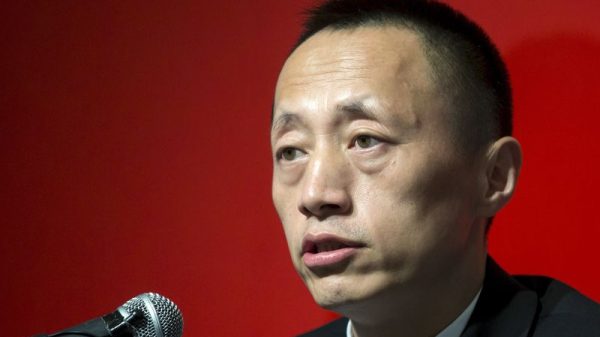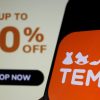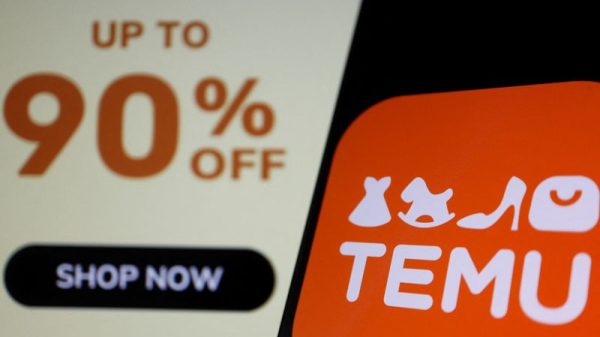TAL Education Group (NYSE: NYSE:TAL) has reported a significant year-over-year increase in net revenues and non-GAAP net income for its Fiscal 2025 Second Quarter, emphasizing its commitment to user experience and operational efficiency. The company has highlighted its growth in the Peiyou small class business and the ongoing investment in its learning devices segment, despite current non-profitability due to high R&D costs. TAL Education Group also extended its share repurchase program, underlining confidence in its long-term growth strategy focused on technological innovation and market expansion.
Key Takeaways
TAL Education Group announced a 50.4% increase in USD and 50.8% in RMB in net revenues, totaling $619.4 million.
Non-GAAP net income for TAL rose to $74.3 million, with a gross profit of $348.7 million.
The company launched the Xbook device and reported 80% active weekly users, indicating strong engagement.
TAL extended its share repurchase program by 12 months, allowing for up to $503.8 million in buybacks.
Management anticipates seasonal fluctuations but remains focused on long-term growth and technological advancements.
Company Outlook
TAL expects seasonal fluctuations but maintains a focus on long-term growth and innovation.
The company plans to refine learning programs and optimize marketing strategies.
Management is optimistic about future developments and maintaining competitive advantages.
Bearish Highlights
The learning devices segment is currently not profitable due to high R&D and operational costs.
Long-term growth rates for the Peiyou small class business are expected to taper.
Bullish Highlights
TAL’s Peiyou small class business has seen growth driven by increased customer interest.
The company is confident in the potential of its learning devices and the Xbook product’s user engagement.
Misses
Gross margin decreased to 56.3%.
Sales and marketing expenses have significantly increased due to competitive pressures.
Q&A Highlights
Alex Peng and Jackson Ding addressed questions on the 60% increase in sales and marketing expenses, emphasizing the need for effective strategies in a competitive market.
Peng outlined plans to integrate AI into products and develop new AI-native applications, leveraging industry-specific data.
Jackson Ding discussed the strategic focus on product quality at xueersi.com and the exploration of a unique economic model for the platform.
In conclusion, TAL Education Group’s latest earnings call reveals a company that is navigating the challenges of a competitive market with a clear focus on innovation and user experience. With substantial investments in technology and a strategic approach to market expansion, TAL is poised to continue its growth trajectory while adapting to the evolving educational landscape.
InvestingPro Insights
TAL Education Group’s recent financial performance aligns with several key metrics and insights from InvestingPro. The company’s impressive 50.4% increase in net revenues is reflected in the InvestingPro data, which shows a robust revenue growth of 52.09% over the last twelve months. This strong growth trajectory is further supported by an InvestingPro Tip indicating that “net income is expected to grow this year.”
The company’s focus on operational efficiency and user experience is paying off, as evidenced by its impressive gross profit margins. InvestingPro data reveals a gross profit margin of 54.28% for the last twelve months, which is consistent with the company’s reported gross profit of $348.7 million in the latest quarter. An InvestingPro Tip highlights this strength, noting that TAL has “impressive gross profit margins.”
TAL’s extension of its share repurchase program is particularly interesting when considered alongside another InvestingPro Tip, which states that “management has been aggressively buying back shares.” This action not only demonstrates confidence in the company’s long-term strategy but also aligns with the company’s strong financial position, as another tip points out that TAL “holds more cash than debt on its balance sheet.”
For investors seeking a deeper understanding of TAL Education Group’s financial health and market position, InvestingPro offers 13 additional tips, providing a comprehensive analysis to inform investment decisions.
Full transcript – TAL Education Group (TAL) Q2 2025:
Operator: Ladies and gentlemen, good day and thank you for standing by. Welcome to TAL Education Group’s Fiscal 2025 Second Quarter Earnings Conference Call. At this time, all participants are in listen-only mode. [Operator Instructions] Please be informed that today’s conference is being recorded. I’d now like to hand the conference over to Ms. Fang Liu [ph], Investor Relations Director. Thank you. Please go ahead.
Unidentified Company Representative: Thank you all for joining us today for TAL Education Group’s second quarter fiscal year 2025 earnings conference call. The earnings release was distributed earlier today and you may find a copy on the company’s IR website or through the newswires. During this call, you will hear from Mr. Alex Peng, President and Chief Financial Officer; and Mr. Jackson Ding, Deputy Chief Financial Officer. Following the prepared remarks, Mr. Peng and Mr. Ding will be available to answer your questions. Before we continue, please note that today’s discussion will contain forward-looking statements made under the Safe Harbor provisions of the United States Private Securities Litigation Reform Act of 1995. Forward-looking statements are subject to risks and uncertainties that may cause actual results to differ materially from our current expectations. Potential risks and uncertainties include, but are not limited to, those outlined in our public filings with the SEC. For more information about these risks and uncertainties, please refer to our filings with the SEC. Also, our earnings release and this call include discussions of certain non-GAAP financial measures. Please refer to our earnings release, which contains a reconciliation of the non-GAAP measures to the most directly comparable GAAP measures. I would like to turn the call over to Ms. Alex Peng. Alex, please go ahead.
Alex Peng: Thank you, Fang. I’d also like to thank all of you for participating in today’s conference call. In this call, we’ll discuss our financial performance and business progress for the second quarter of fiscal year 2025. We will also review some key business results. Afterwards, I’ll provide a brief update on our business strategy outlook. In the past fiscal quarter, we consistently refined our services and experiences for users, generating societal value through our dedication to customer experience. At the same time, our business is experiencing sustained growth not just by building our teams or opening new learning centers, but through a broader, ongoing development that reflects our long-term vision. Our focus on innovation, user engagement, and service excellence has resulted in sustained user value creation through our various products and services. In alignment with our strategic objectives, our core businesses have maintained their course of operations. Next, let’s talk about our performance for the second quarter of fiscal year 2025. Throughout this quarter, we continue to enhance our core businesses while actively exploring new growth opportunities. While exploring and investing in additional opportunities and long-term strategic capabilities, we also maintained a focus on operational efficiency and sustainability. We continuously adjust our resource allocation to ensure a balanced approach between growth and operational efficiency. Our learning services continue to develop steadily, empowering learners through our off-line and online enrichment learning programs. This progress reflects our commitment to high quality service and expansion of our operational capacity. We continue to take a dynamic approach in managing our learning center expansion plan, evaluating several factors such as market demand in each area, user acceptance of our products, our operating capability, and efficiency. So, in line with our strategic objectives, our online enrichment learning business remain on track. We continue to innovate in response to the evolving landscape and changing user behaviors in the online learning sector. Over recent years, we have introduced a range of new offerings designed to provide an efficient and engaging digital learning experience for our customers. For learning devices, we expanded our product offerings to reach a broader audience, making it easier for more users to find learning solutions tailored to their individual needs. Our goal is to motivate learners on their self-learning journeys at home by leveraging smart features and comprehensive resources integrated into our devices. So with that goal in mind, we further upgraded our hardware and software this quarter, enhancing the content library, upgrading the reading section, and adding practical smart features to create a more immersive and engaging online learning experience. In August, we launched a lower ASP device that serves students learning needs as well as practice needs. We call it Xbook [ph], which has begun to gain market acceptance. Efforts like these are driving our financial growth. Our net revenues were US$619.4 million or – 4.4739 billion [ph] RMB for the quarter, representing year-over-year increases of 50.4% and 50.8% in U.S. dollar and RMB terms, respectively. Our non-GAAP income from operations and non-GAAP net income attributable to TAL for the quarter were US$64.5 million and US$74.3 million respectively. So with that overview, I’ll now hand the call over to Jackson who will provide an update on the operational advancements we’ve made in our core business lines. He will also review our financial performance for the second fiscal quarter. Jackson, over to you.
Jackson Ding: Thank you, Alex. I am pleased to share with you some details about the progress we made in the fiscal second quarter across all core business lines. Please note that all financial data for the quarter are unaudited. I’ll start with our learning services and others business, which includes a broad range of learning programs for our customers. Learning services continued its development momentum in the second quarter of fiscal year 2025. Revenue increased year-over-year propelled by advancements across multiple product lines. The largest revenue contributor in this business line remains Peiyou’s small class offerings, which maintained their upward trajectory. Peiyou’s growth was primarily driven by enrollment growth supported by the expansion of our operating capacity. We carefully assessed both user demand and our operational capacity. We struck a balance that allowed us to meet the growing demand during the summer vacation period while managing teaching quality, business sustainability and operational efficiency. Key efficiency indicators such as retention rate remained relatively stable quarter-over-quarter. For our online enrichment learning business, we remain focused on adapting to evolving market landscape and user needs through consistent innovation. By introducing new products and interactive formats, we create value for our learners and deliver learning efficacy and experience [ph]. Based on user feedback and market insights, we continue to invest in strengthening our online product capabilities as well as operational and marketing strategies. This allows us to expand our current operations while building a solid foundation for long-term competitiveness. Next, our content solutions business. Its revenue continued to grow this quarter. Thanks to our efforts to optimize products, enhance user experiences, and strengthen our sales channels. We believe our learning devices are companions for at home self-learning, which is why we closely monitor user feedback and experience. As a result, amid rising sales and an expanding user base, user engagement and time spent on our devices remained at healthy levels this quarter. In August, we launched Xbook, further enriching our product lineup. The latest generation tablet features a color e-paper display and offers three modes, learning, practicing, and reading, catering to various learning scenarios. We developed a tiered practicing system, making practice easier and more efficient. Additionally, it comes with a comprehensive, multilayered content ecosystem. Along with our proprietary shares of content, we partnered with well-known educational publishers and youth content providers to offer a wide range of study aids and reading materials. During this fiscal quarter, we also upgraded our existing xPad learning devices. The newly enhanced reading section includes over 3,000 eBooks featuring essential reading materials, classic literature, and children’s publications. We also developed a leveled reading system that caters to children’s various developmental periods. It aligns with the new curriculum standards and covers levels from primary school to high school. Moreover, our newly launched [indiscernible] 2.0, introduced in June, offers a host of AI features, making it a more intelligent and practical learning companion. With that overview, I would now like to share our key financial results for the second fiscal quarter. Our net revenues were US$619.4 million or RMB4.4739 billion, an increase of 50.4% and 50.8% year-over-year in U.S. dollar and RMB terms, respectively. Cost of revenue increased by 59.8% to US$270.6 million from US$169.4 million in the second quarter of fiscal year 2024. Non-GAAP cost of revenues, which excludes share-based compensation expenses, increased by 60.7% to US$268.8 million from US$167.3 million in the second quarter of fiscal year 2024. Gross profit increased in the second quarter of fiscal 2025, rising by 43.8% year-over-year to US$348.7 million from US$242.5 million for the same period last year. Gross margin decreased to 56.3% from 58.9% for the same period last year. Selling and marketing expenses for the quarter were $181.9 million, representing an increase of 56.4% from $116.3 million for the same period last year. Non-GAAP selling and marketing expenses, which exclude share-based compensation expenses increased by 61.6% to $177.9 million from $110.1 million for the same period last year. Selling and marketing expenses as a percentage of total net revenues increased from 28.2% to 29.4% year-over-year. General and administrative expenses increased by 23.1% to $119.5 million from $97.1 million in the same period of last year. Non-GAAP general and administrative expenses, which excluded share-based compensation costs, increased by 28.3% year-over-year to $108.3 million, from $84.4 million for the same period of last year. Non-GAAP general and administrative expenses as a percentage of total net revenues decreased from 20.5% to 17.5% year-over-year. Total share-based compensation expenses allocated to the related operating costs and expenses decreased by 19.1% to $16.9 million in the second quarter of fiscal year 2025 from $20.9 million in the same period of last year. Income from operations was $47.6 million in the second quarter of fiscal year 2025, compared with an income from operations of $31.8 million in the same period of last year. Non-GAAP income from operations, which includes – which excluded, excuse me, share-based compensation expenses, was $46.5 [ph] million, compared with a non-GAAP income from operations of $52.7 million in the same period of the prior year. Net income attributable to TAL was $57.4 million in the second quarter of fiscal year 2025, compared to net income attributable to TAL of $37.9 million in the same period of last year. Non-GAAP net income attributable to TAL, which excluded share-based compensation expenses, was $74.3 million, compared to a non-GAAP net income attributable to TAL of $58.8 million in the same period of last year. Moving on to our balance sheet; as of August 31, 2024, we had $2,085.9 million in cash and cash equivalents, $1,368.4 million in short-term investments and $295.1 million in current and non-current restricted cash. Our deferred revenue balance was $5117.6 million as of the end of the second fiscal quarter. Now turning to our cash flow statement; net cash used in operating activities for the second quarter of fiscal year 2025 was $0.6 million. In April 2024, the Company’s Board of Directors authorized to extend its share repurchase program launched in April 2021 by 12 months. Pursuant to the extended share repurchase program, the Company may spend up to approximately $503.8 million to purchase its common shares through April 30, 2025. As of August 31, 2024, the Company has purchased approximately 500,000 common shares at an aggregate consideration of approximately $13.1 million under the share repurchase program. That concludes the financial section. I will now hand the call back to Alex to briefly update you on our business outlook. Alex, please go ahead?
Alex Peng: Thanks Jackson. I would like to share our outlook for the upcoming quarter. The fiscal third quarter is generally not a peak season for enrichment learning demand, and we may experience fluctuation in our business performance due to seasonal factors. Nevertheless, we remain dedicated to driving healthy and sustainable long-term growth across all our business lines. First of all, we’ll continue refining our various learning programs to deliver high quality learning services to a growing user base. We’re committed to ongoing investments in learning services to ensure that our users receive quality learning experiences both online and in person. Next, we’ll remain focused on technological innovation, consistently launching high quality smart devices that enhance personalized learning experiences. We target to iterate the functionality of our learning devices by harnessing AI technologies. We’ll keep introducing an updated content and smart tools. Together, these efforts will provide a more intelligent and practical learning companion for our users self directed learning at home. Meanwhile, we’ll also remain focused on managing our sales channels and optimizing our marketing strategies. As a company dedicated to learning we’ll continue operating and managing our core business lines while exploring new initiatives and seizing new opportunities to keep up with our customers ever evolving needs. We’ll explore and design differentiated products and services. Our business model, combined with our brand strength and operational efficiency, positions us to seize market opportunities and deliver enduring value for our customers and shareholders. So that concludes my prepared remarks. Operator, I think we’re now ready to open the call for questions.
Operator: Thank you. [Operator Instructions] Our first question comes from the line of Felix Liu from UBS. Please ask your question, Felix. Felix, your line is open. Please ask your question.
Felix Liu: Hello, can you hear me, okay. Hi. Sorry, I was on mute. Thank you, management, for taking my question and congratulations on the strong results. My question is on your learning service business. Could you share more color on the growth momentum and the operating leverage, sorry, operating efficiency of the business? And what is your outlook for learning service from here? Thank you.
Alex Peng: Thanks Felix. This is Alex. Let me take on that question first and I may call on Jackson to add some additional insights. Really, when we look at the last few quarters, we’ve seen continued growth momentum for our enrichment learning business. We’ve been seeing increasing demand for enrichment learning as this new generation of parents start to develop their own parental and educational philosophies. I think in earlier calls we had called out that this is something that we were envisioning and now I think we’re seeing more and more of confirmation. This new generation of parents have developed more focus on their kids well rounded whole person development in addition to academic performance. Although we’re still, and I think this data is not easy to come by in terms of how fast the enrichment learning market overall is growing. We really observed more activities and user increase for enrichment learning on the ground, which I think really is indicating growing customer interest. So in tandem with the market growth of enrichment learning, our learning services business has been experiencing continued progress. We’ve been aiming to help our learners with their holistic development experience by providing interactive, engaging learning experience. We have observed that learners in these type of enrichment programs, they really exhibit continued growth in terms of their interest. They stay engaged and they also learn very effectively. I think Jackson can talk more specifically about the growth momentum and operating efficiency that you had asked.
Jackson Ding: Thank you, Alex. And thank you, Felix. Let’s maybe limit the conversation to Peiyou small class enrichment learning first; which as you may know is our largest business within our learning services. There are some other businesses within our learning services category, but some of them are at a different stage of their life cycle and exhibit slightly different trends, and to the extent you have more questions on other business lines, feel free to follow up. So, like Alex said, we have seen growth in Peiyou enrichment in parallel with user interest growth. The overall market development has been an important contributing factor of our business growth. And if we shift lenses a bit to look away from the market and just look at ourselves, we believe the key growth drivers, amongst others are one, the quality of our services and two, our capability to recruit and train lecturers. For service quality we have been focused on and will continue to focus on standardized lecturing approach, while providing an interactive and student centric learning experience. For lecturer recruiting and training we pride ourselves in training most of our lecturers in-house to ensure consistent service quality. Now, as long as these growth drivers continue to prevail, including what we talked about earlier, market demand or service quality and our capability to recruit and train lecturers, we expect growth in this business line to continue. However, in the next few years we do expect Peiyou enrichment’s long-term growth rate to gradually taper off as we’re coming off higher base numbers than a couple of years ago. Felix, I think you also asked about operating efficiency. We always aim to maintain a consistent level of efficiency through balancing our operating capacity with the market demand we observe. We measure several efficiency indicators such as utilization rate, refund rate and retention rate. Currently, our operating metrics are at a level that we believe would sustain our viable business model and we aspire to maintain our current level of efficiency. In the future, we will prudently manage our learning center network. We will balance growth and efficiency as we think about how to manage our learning center network. I hope that answers your question, Felix.
Operator: Thank you. Our next question comes from the line of DS Kim from J. P. Morgan. Please ask your question, DS.
DS Kim: Hi Alex. Hi Jackson. Good evening and congrats on such a strong bid. Thank you for a great trade. I think you should be great for discussion as well. I have a question on learning devices if, okay. Our channel checks indicate that device sales had really strong momentum over summer, which I think might be the reason why GP margin contracted a bit this quarter. But anyway, my question is can I ask a) is a learning device segment profitable on cash or even accounting basis? That’s the first question. And b) what’s our strategy to enhance profitability here? Say, have you thought about monetizing additional revenue streams like value added services and whatnot to utilize? I think already quite fast at a big install base and user base and I may have a follow up after this? Thank you.
Alex Peng: Hey DS, this is Alex. Thanks a lot for that thoughtful question. Look, AI learning devices, they’re really relatively new, a new business for us, right? If you recall, I think our first learning tablet came to market in February 2023, which is really just a little bit over a year-and-a-half ago. But while new we’re really excited about the opportunity to provide further accessibility to high quality learning content and experiences for a wider range of customers through these learning devices. We track where our devices have been sold to and we really see that some of our devices have been sold into areas where we never built learning centers before. So these AI powered devices really present us an opportunity to serve customers without the limitation of our physical footprint and I think really to expand availability of these high quality content and learning experiences to a much wider segment, to many more students out there. So with that goal in mind, we recently launched a new device in the lower ASP territory. We talked a little bit about this earlier it’s called Xbook [ph]. So in addition to high quality learning content, this product also has more daily practice functions. So they serve a learner’s learning needs as well as practice needs which are really important that they go in tandem. And we’ve been receiving positive feedback on this new product. So our learning device business is currently loss making. The major cost items are primarily product, research and development, selling expenses and bill of materials. We are really investing strongly into R&D to create quality product experiences for our users. And I like to add research and development here is not limited to R&D on hardware and software or AI functions, but also in the content space. As Jackson mentioned earlier, we continue to make investment into our own proprietary content development as well as curating content from leading content publishers, which further enhances user experience. And also this development is ongoing. As Jackson mentioned earlier, we have new curriculum standards rolling into different grades and we obviously upgrade our contents in accordance to these new curriculum standards. So we really intend to continue to invest into this business to elevate the user experience, to serve more customers and really to create greater societal value. I think that our aim here is really to help users with their self-learning journey at home by leveraging the intelligent features and abundant resources, which are all integrated into our learning devices. We hope we can empower more children to engage in this kind of self-directed learning and enabling their personal development. As for value-added services, look really, we think the foundation of any value-added service is an active and highly engaged install base. As a result of our product capabilities, we really witnessed a steady level of high user engagement for our learning devices on an ever expanding user base. I’ll give you an example. So we have an active user base with weekly active rate at around 80% even as the user base kept on growing. And actually the majority of our weekly active users are actually averaging five or more days per week of usage. So we are always interested in exploring new revenue opportunities. But this needs to come not at the expense of user experience. I have nothing tangible at this point to share in terms of value-added services, but we’ll continue to stay focused on product quality and user experience. DS, I hope that answers your question.
DS Kim: It did, and thanks so much for the insight and great answers. I’ll go back to the queue and thank you again and congrats.
Alex Peng: Thank you.
Operator: Thank you. Our next question comes from the line of Timothy Zhao from Goldman Sachs. Please go ahead Tim.
Timothy Zhao: Great. Hi Alex. Hi Jackson. Congrats on the very strong quarterly result and thank you for taking my question. My question is regarding your sales and marketing expenses, which I noticed that year-on-year growth for this quarter is around 60%. I would say, I think a big portion within the sales and marketing expenses could be related to your learning devices or content solutions business. Just wondering, how do you think about the competitive landscape for these devices for this year, and has the sales and marketing expenses per device increased this year, and how do you think about the trend going forward? Thank you.
Alex Peng: Thanks, Tim. This is Alex again. Let me take this on. So I like to unpack this a few different levels. First, I think we are confident in our learning devices products. We continue to innovate in response to the evolving competitive landscape and changing user demands in the sector. Our goal is really to motivate learners on their self-learning journeys by leveraging the smart features and all the resources integrated into our devices. And I think our user value really has been reflected in our positive user feedback and healthy user engagement metrics. At the same time, obviously we’ve witnessed full stack players either entering this market or investing more into this market. So what do I mean by full stack? I mean players who have experience and assets in hardware, software and AI, in content and in learning solutions. With the entrance of these full stack players, this will likely result in creating enhanced user experience in this industry, which I think is really a good thing for the customers. This might also lead to broader customer awareness of this product category and its inherent value in the learning journey, which we believe could benefit the entire industry and also the customers. So really to net it out, learning device is one of our strategic priorities. We’re excited about its business prospect and we’ll make our effort to keep up with, and in some instances really to lead the industry’s innovations. I think in our industry, competition really exists on multiple levels. There’s going to be competition on a product level, competing for talent and competing for customers. As a company that takes pride in our product and service quality, we really invest heavily in product research and development. And as for competition for talent, we aim to attract multidisciplinary talent by leveraging our expertise in the learning industry and our technology know-how. As for the competition for customers, I think really, as we discussed earlier, ultimately it’s beneficial both to the users and to the development of the industry. I do admit, I think it does impact sales and marketing in some occasions. So we believe the key is to lead in product competency while exploring efficient ways to communicate with our customers, especially given that this is an emerging category. Right? We’ll focus on building sales and marketing capabilities both within existing channels and building new channels. In some of the channels we’ve witnessed and I think this is not hard to anticipate that sales marketing re-increase. But while they also could stable, and they do stable, they do stay stable in other channels. So this has to do with market mechanisms, with specific channels. We closely monitor the efficiency across the sales channels as we build out our go-to-market capabilities. So Tim, I hope that answers your question.
Timothy Zhao: Yes, that’s quite helpful. Thank you.
Operator: Thank you. Our next question comes from a line of Alice Cai from Citi. Please go ahead, Alice.
Alice Cai: Good evening management team. Thanks for picking up my questions and congrats on the robust results. Could you share your upcoming investment plans in AI, particularly in the learning device sector? Would love to hear more about your AI product domains and AI scale needed, investment scale needed? Thanks.
Alex Peng: Thanks, Alice. This is Alex again. So before we go into product roadmap and the investment plan, maybe let me share with you how we look at the market landscape for AI in vertical domains and more specifically AI in our industry. By the way, I spent a week in the U.S. in Silicon Valley talking to AI players and AI players in education. And I think a trend that many people across the world in this industry is observing is that the capability of the foundation models have continued to improve and they improve at a pace that might have surprised many of us. So this presents exciting opportunities actually for vertical players like us. We think that lighting this tailwind, vertical players, including us, will focus on, if not already focusing on, probably two things primarily. The first is leveraging the wealth of data that’s particular to an industry to train vertical models. And I think, by the way, the recent trend toward reinforcement learning is really interesting in this regard. So that’s the first one, the data. And the second is developing applications that leverage the powerful capabilities of foundation models as well as vertical models. One of the keys to success to us as a vertical player in the AI space is really to possess a breadth of structured and unstructured data suitable and relevant to the AI era. Some of our historical investments into prior generations of AI technologies have really benefited us with a great treasure trove of data that we sit on today. As for developing AI powered applications, I think we have an abundance of experience in developing learning applications powered by technology. And we understand the complexity of such endeavors. And really this complexity is coming from years of experience. We believe we are really well positioned to take a crack at some of learning’s hardest problems through AI. So having said that, preface, next I’d like to share with you more about specific product roadmap and the investment plan. So our product roadmap really entails a combination of AI powered functions embedded in our existing products and newly rolled out AI native products. As you can probably imagine, unlike many other verticals, we’ve been making visible progress on AI powered functions through our existing products, and they keep coming out, and they’re coming out as new features, but also as upgrades on existing features. I think on the last few calls, we had talked about some of these functionalities, such as SD [ph] correction and natural language based [indiscernible] our learning tablet, but it doesn’t stop there. In our newly launched Xbook, for example, we can now provide correction and feedback on math – mathematics, English, and Chinese questions with users handwritten answers. What makes this possible is really our effort on MathGPT and other AI capabilities. And with the model built on industry specific data, we can now get the accuracy of these to be significantly higher than without them. So this function is just an example of where we really bridge cutting edge technology to solving customers’ pain points. And in doing so, we provide learners with enhanced learning efficiency. We’ve also been making progress on AI native applications. In the last few months, we rolled out an AI question-and-answer application. So compared to traditional solutions in the market, our application engages with learner real time during their problem solving journey. The application guides a learner step by step, pausing when the learner is stuck, explaining the relevant concepts and making sure the learner follows the process. And I like to say to people, look, one effort, one kind of effort is to help the model solve more of the mathematics questions correctly. But really, it’s a whole different level to help the model, to explain the solution, to guide the user on the learning journey better. So that’s where really thanks to our accumulated industry experience knowhow and vertical data in all the practices we’ve accumulated over the past two decades. We’re able to launch such intelligent tools to enhance our users learning experience. So now coming to your question about investment into AI. Look, we have invested into compute, infrastructure, talent and data. I think we’ve been adequately served by the infrastructure investments we already made as cost per token is coming down dramatically across the world. And we are – I think we are comfortable with our current level of infrastructure investment. Looking forward, our investment in AI will focus more on the application layer. The applications we shared above are just examples of what we currently have. We intend to roll out new applications as well as upgrading our current applications as we progress. I hope that answers your question.
Alice Cai: Thanks. It is very helpful.
Operator: Thank you. Our next question comes from the line of Liping ZHAO from CICC. Please ask your question, Liping.
Liping ZHAO: Hi, Alex. Hi, Jackson. Thanks for taking my question. So my question is about your xueersi.com business. Could you please elaborate the UE [ph] of xueersi.com and how should we think about long-term growth outlook of that business? Thank you.
Jackson Ding: Liping, thanks for the question. This is Jackson. Let me take this one. First, I would like to share with you some of our thoughts on xueersi.com and the online learning industry in general. If we look back at a few years ago, the online learning industry went through a phase where some industry participants were heavily focused on customer acquisition. We do not think that’s a sustainable approach. In the online learning space, the market is evolving and we’re seeing user needs changing. For example, we see more and more demand for enrichment learning programs and for student centric learning, particularly demand for science and technology emerging. There is also transformation on the supply side in terms of what industry participants are providing. We observed varied product formats catering different user needs. Now, in the market, there’s more than just large class one-way [ph] lecturing offerings. The market is also supplemented with prerecorded classes, experimental toolkits, and et cetera. We’re really excited about this opportunity to provide science and technology immersion to a broad range of audience. For example, our science and experiment program guides learners to master complex science concepts through observing various scientific phenomena in daily life, conducting hands-on experiments, and connecting experiment results with science concepts for a deeper understanding. This program is designed to develop learning scientific learners scientific curiosity, innovative mindset, and problem solving capabilities. We have observed that learners enrolled in this program exhibit continued interest. They stay engaged and they also learn effectively. Liping, you asked about growth outlook and growth drivers. In this market, we believe our current main growth driver is our product quality. We continued to innovate in response to the evolving landscape and changing user behaviors in the online learning sectors. Over the recent years, we have introduced a range of new offerings designed to provide an efficient and engaging digital learning experience for our customers. These programs are designed not only to align with online learning habits, but also to fully leverage online learning’s unique advantages, bringing scarce and high quality educational resources to a broader audience. We’re observing sufficient demand for online enrichment products. We’re currently exploring various formats of products to fulfill the demand. So it’s about the mix of old SKUs and new SKUs. We think this is an exciting market. Looking ahead, we’ll continue to innovate and iterate our enrichment learning programs and services to meet new user demand for digital learning experiences. So based on these market observations and based on our confidence in our product quality, xueersi.com is one of our strategic priorities. We have been consistently investing into this business. We focus on investing in strengthening our online enrichment product capabilities as well as operational and marketing strategies. This allows us to expand our current operations while building a solid foundation for long-term competitiveness. We do not think currently xueersi.com has a mature unique economics model just yet. The unique economics model and operating model of xueersi.com are continually being explored. We will try to balance growth and profitability during this exploration phase. I hope that answers your question Liping.
Liping ZHAO: Thanks, Jackson. That’s helpful. Thank you.
Operator: Thank you. We have now reached the end of the question-and-answer session. Thank you all very much for your questions. I’ll now turn the conference back to the management team for closing comments.
Alex Peng: So thanks again for joining us today and we look forward to talking to you next quarter. Bye-bye.
Operator: Thank you very much for your participation in today’s conference. This does conclude the program. You may now disconnect.
This article was generated with the support of AI and reviewed by an editor. For more information see our T&C.




























